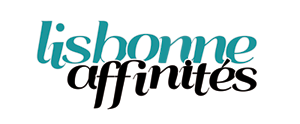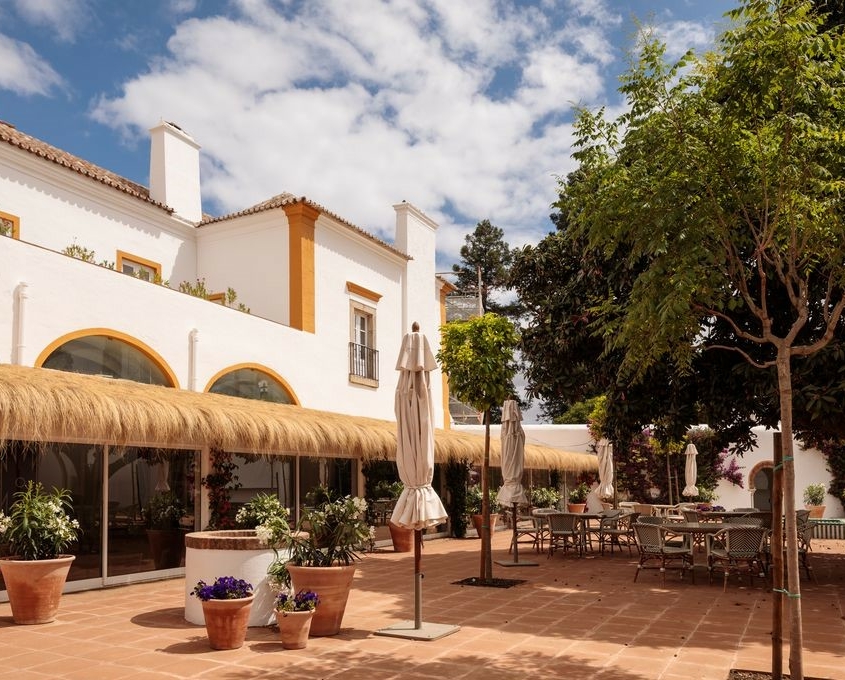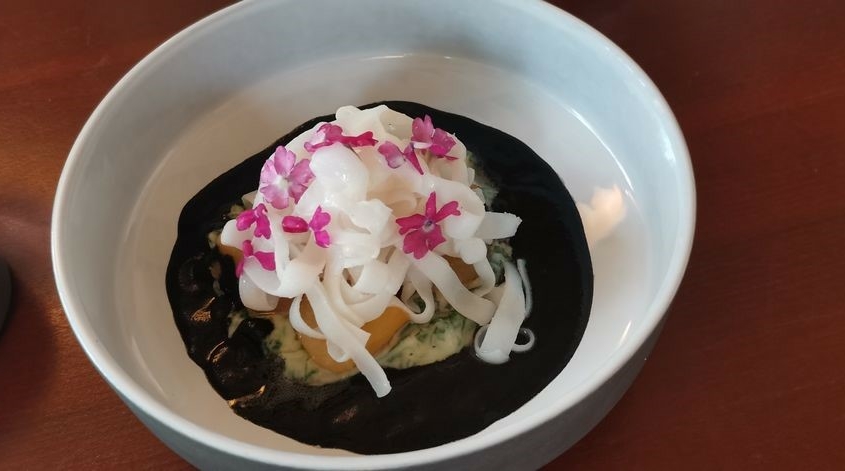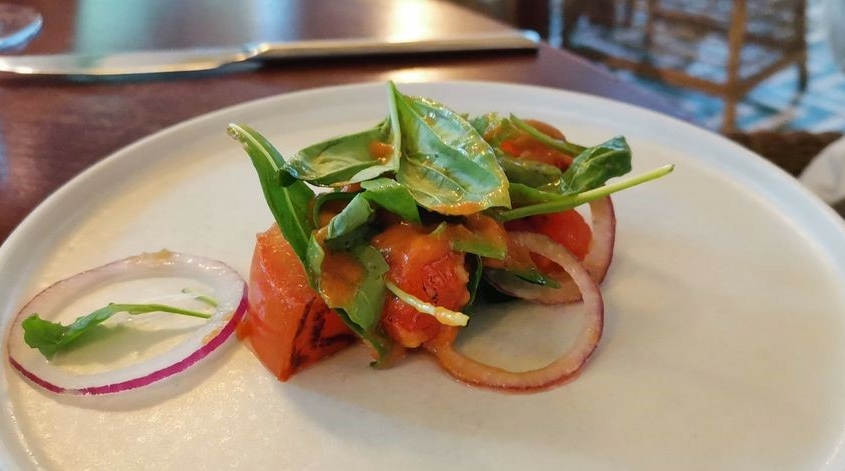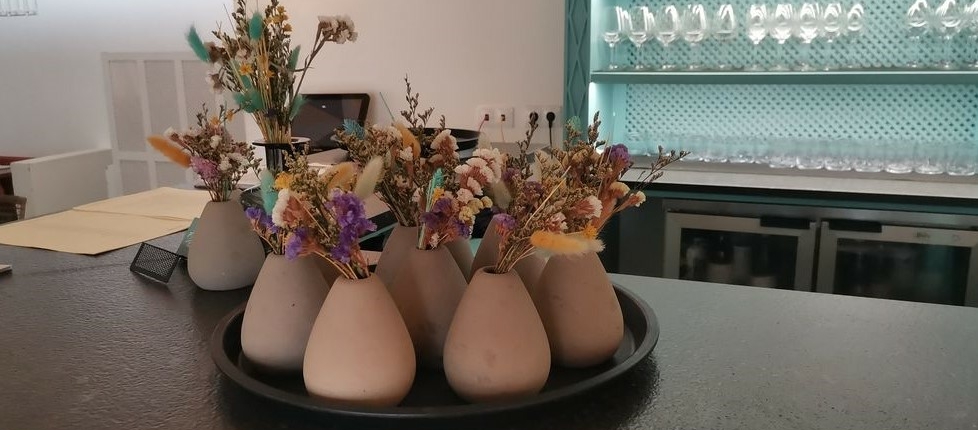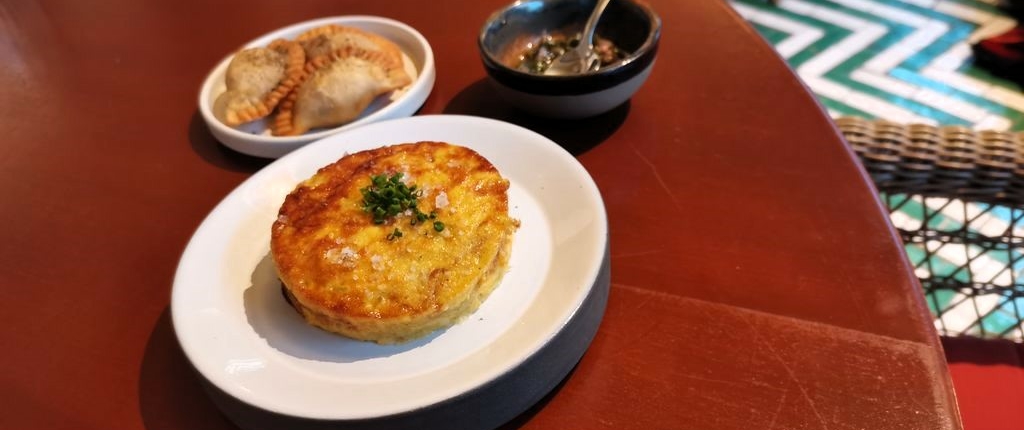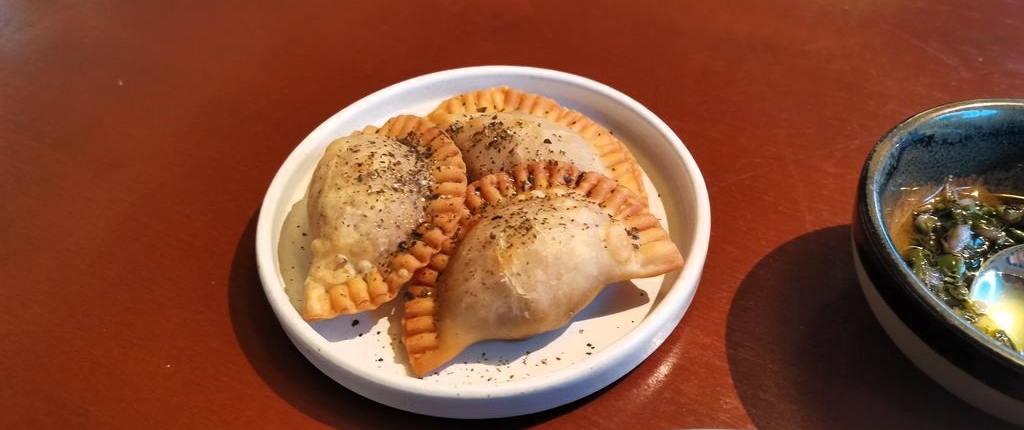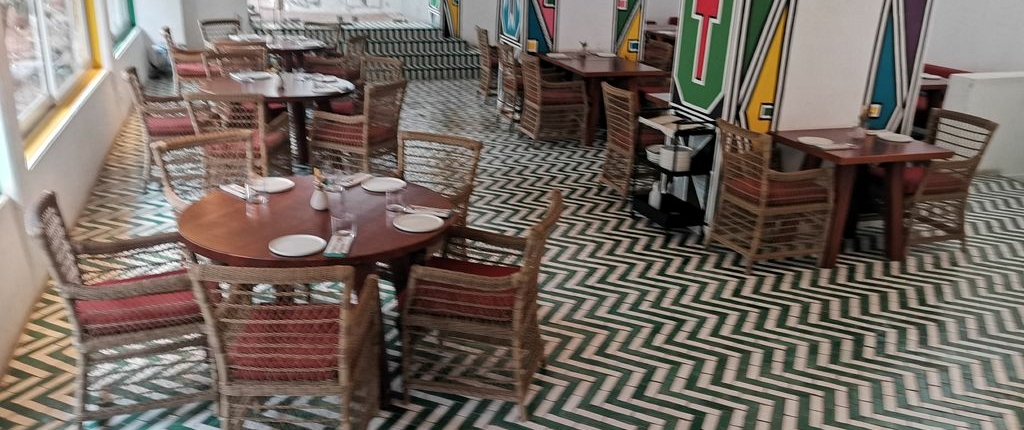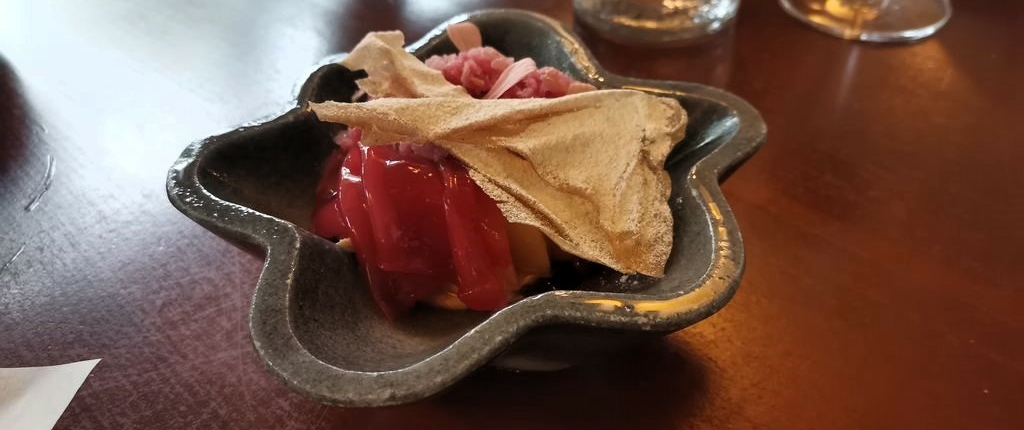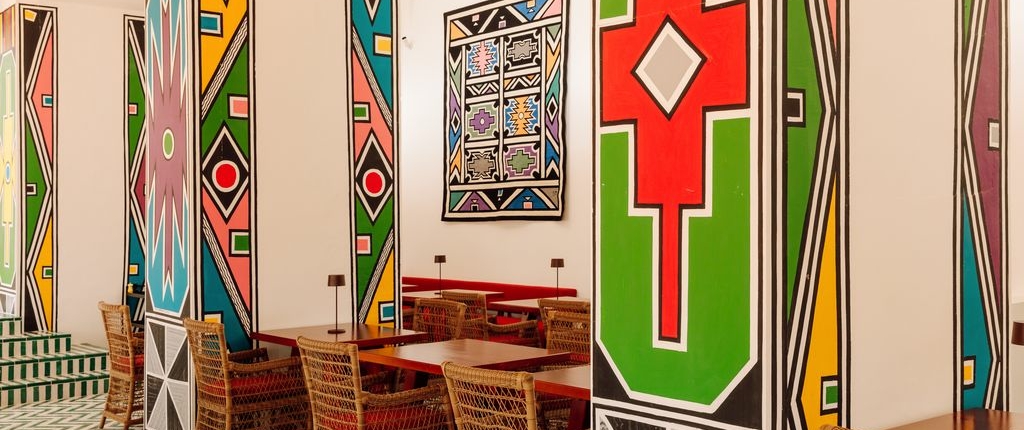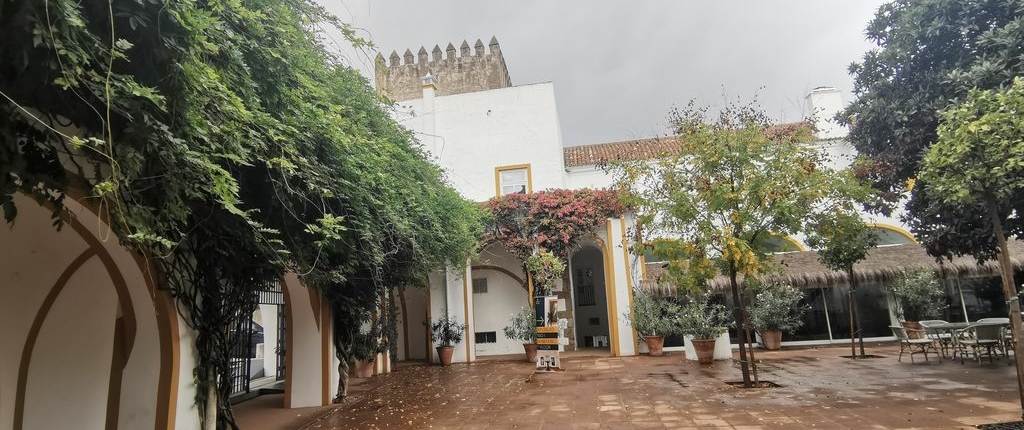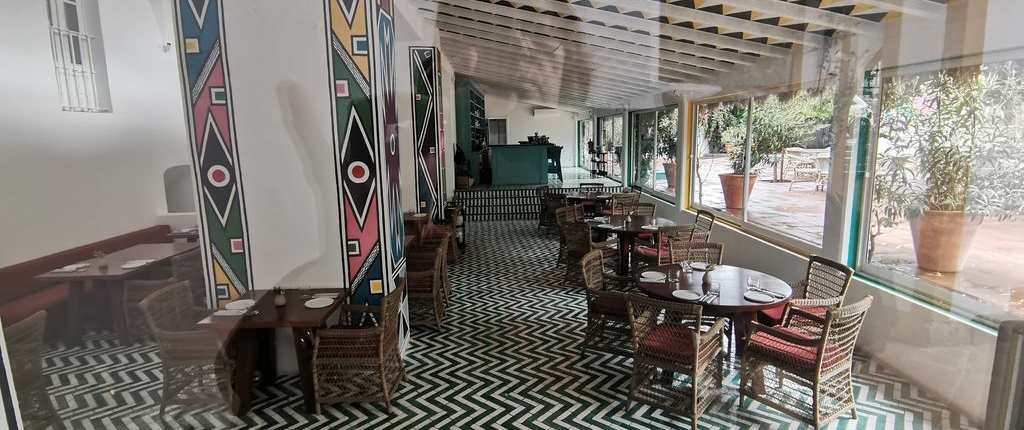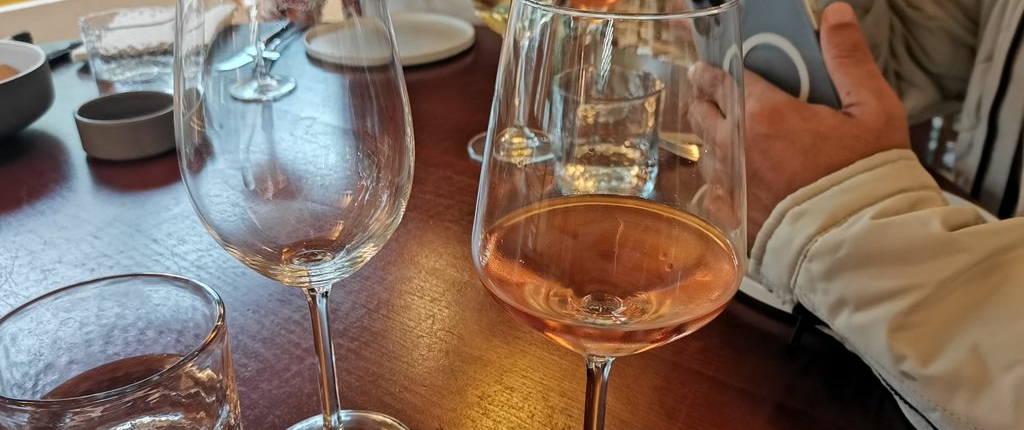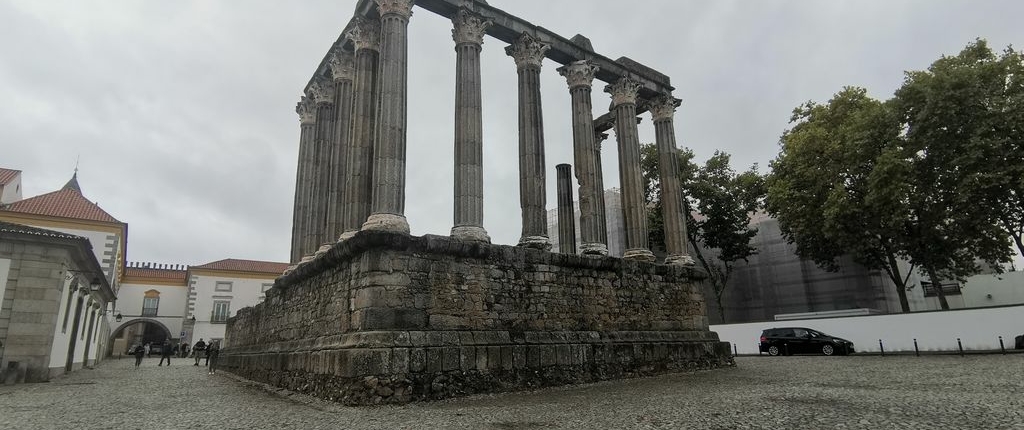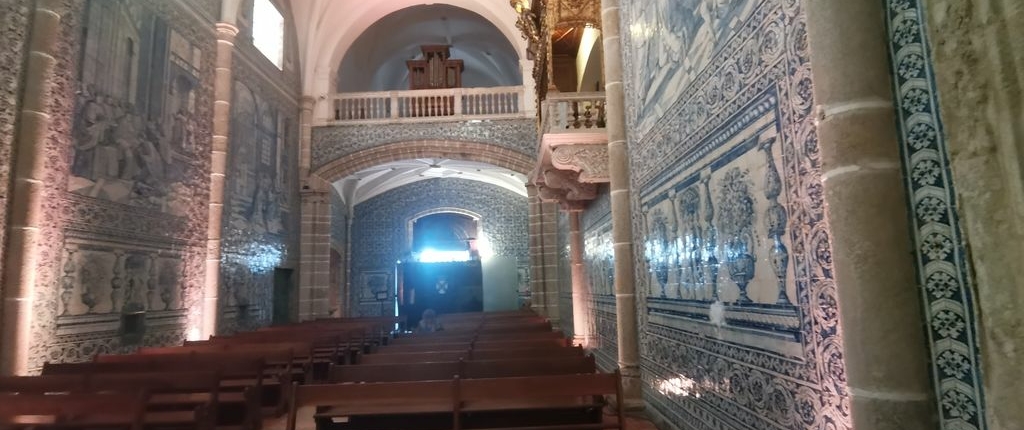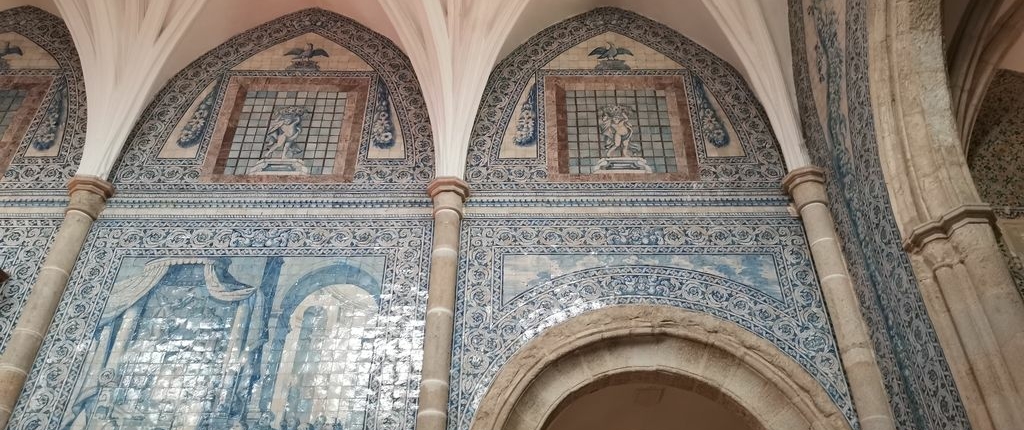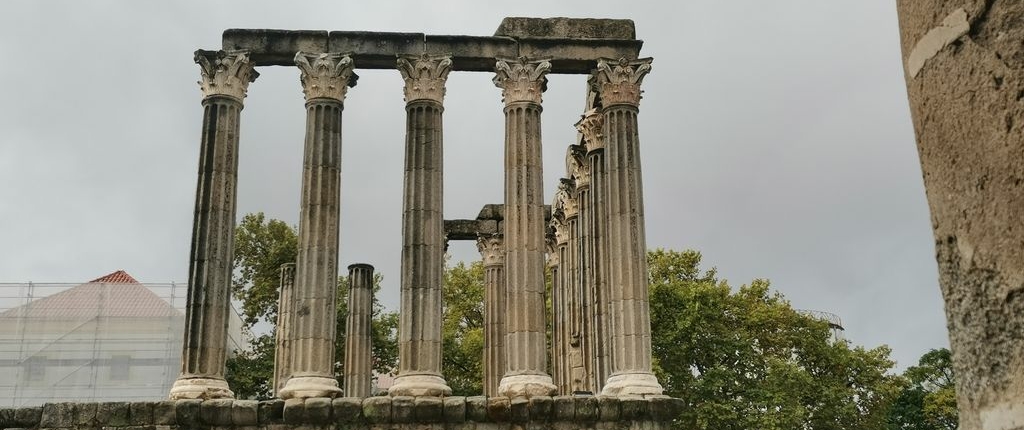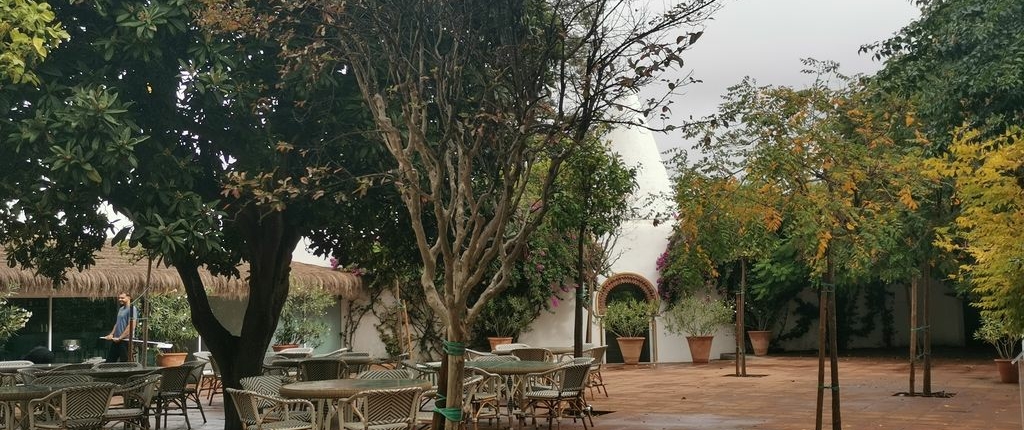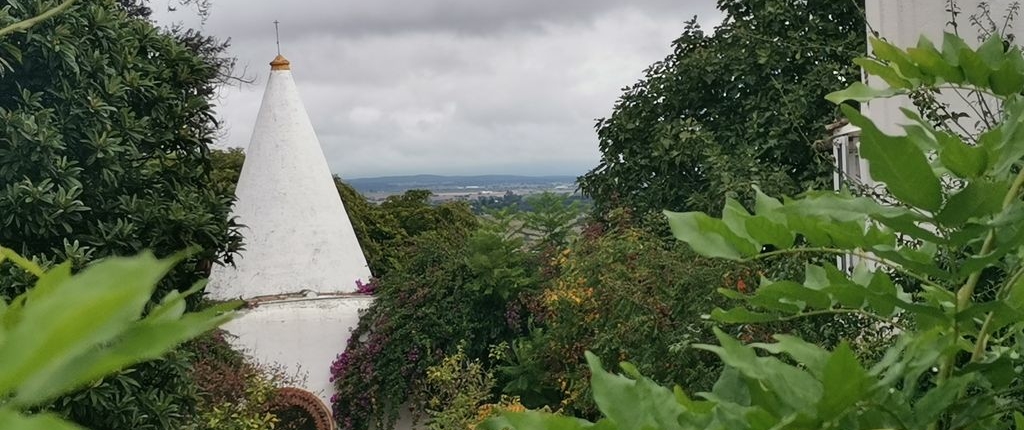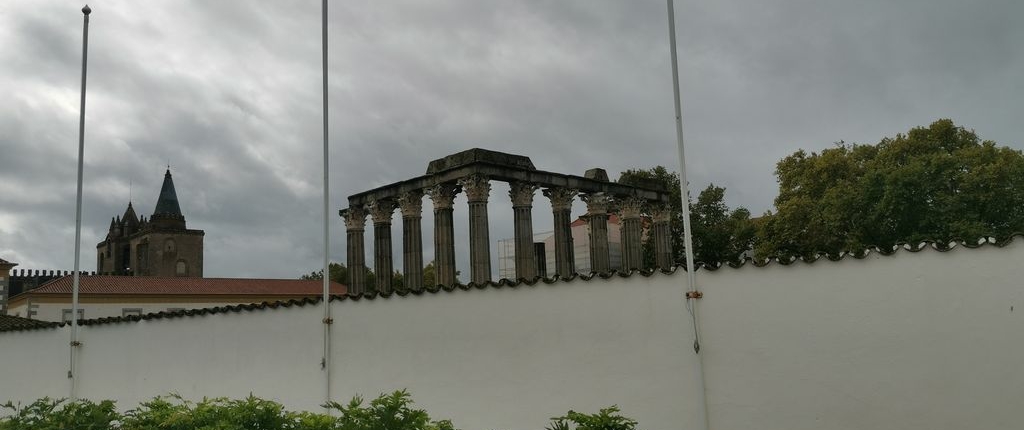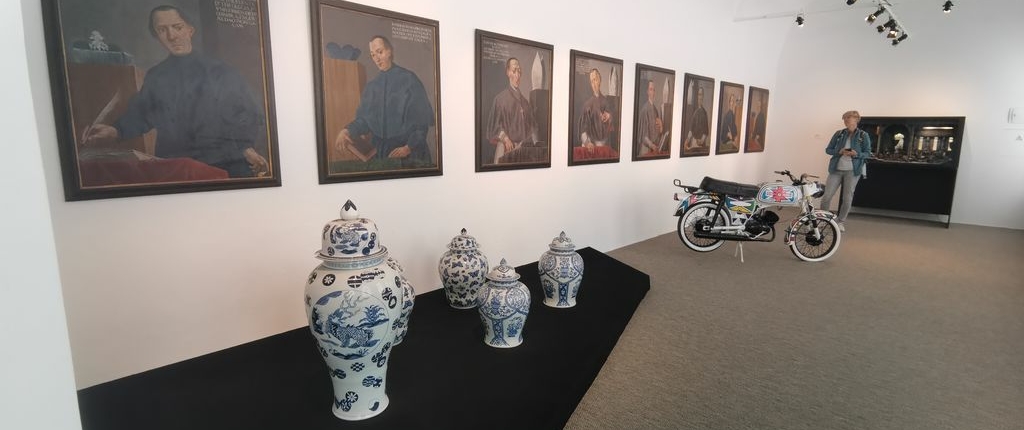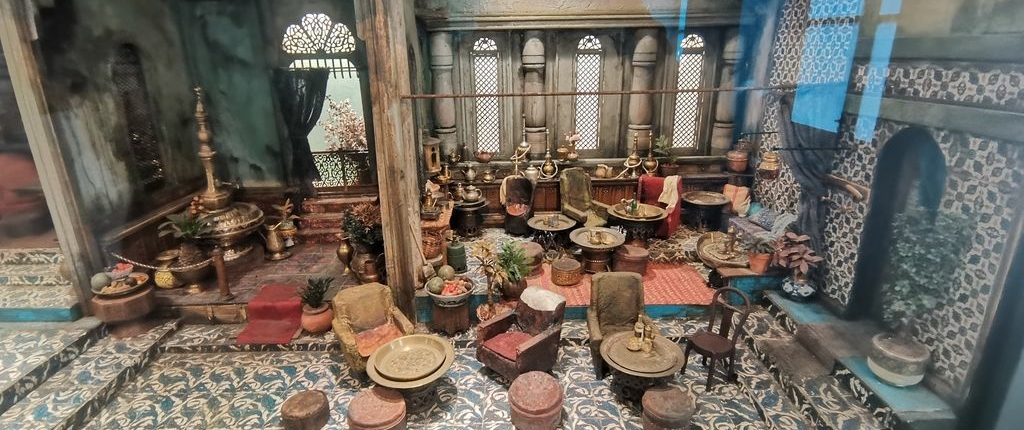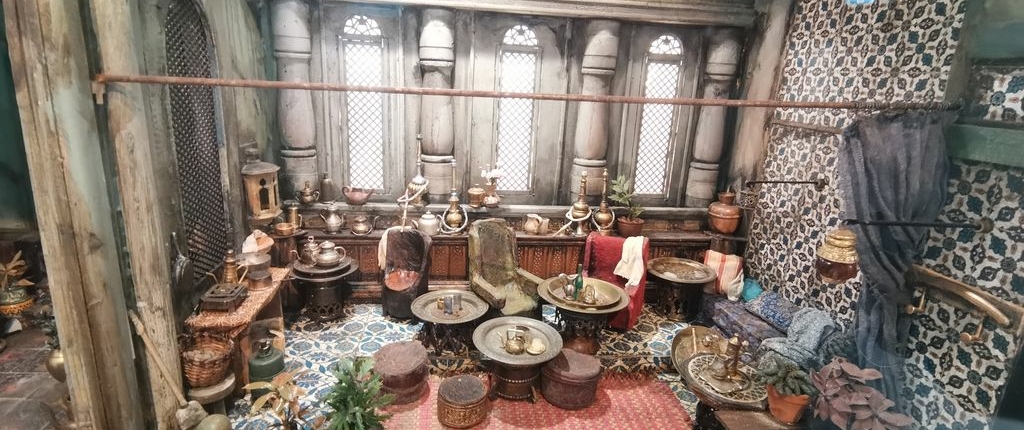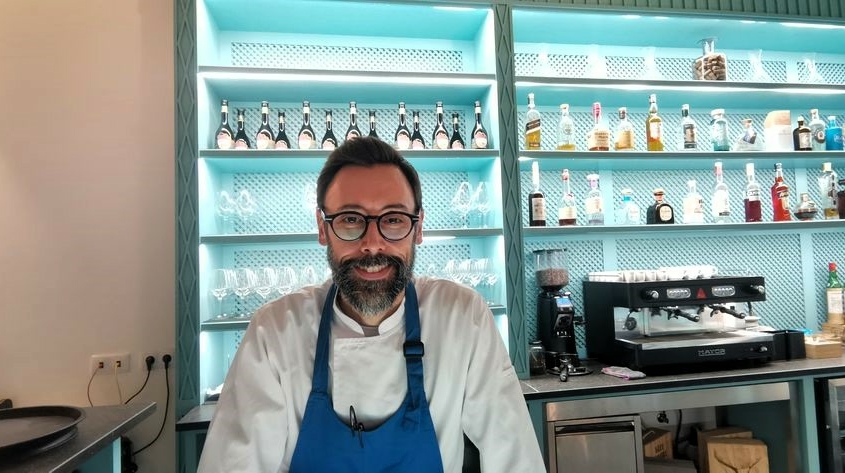The Cavalariça Évora restaurant, contemporary alentejane
Cavalariça, the reinvention of Alentejano gastronomy
Évora, in the Alentejo, is a city remarkable for its rich heritage. It is protected by ramparts and contains treasures from its fabulous history.
Moorish, Jewish and Christian in the past, Évora was also Roman. One of its jewels is a well-preserved temple in the town centre, not far from the Sé Cathédrale.
For a long time it was known as the Temple of Diana, but it is not actually dedicated to this goddess. It was built in honour of the Emperor Augustus.
The palace of the Dukes of Cadaval, which adjoins the temple, affords a unique view of the Roman edifice.
But it’s in the ducal courtyard that you’ll find the gastronomic treasure we’re interested in: the Cavalariça Évora restaurant.
Set in the palace garden, under a glass roof, the restaurant is extended by tables on the terrace in the palace’s main courtyard, shaded by fruit and decorative trees.
The restaurant has been entrusted to chef Bruno Caseiro.
A passion for good local produce
Chef Bruno Caseiro makes it a point of honour to make the most of good local produce. At Cavalariça Évora, the meat tastes like meat, the fruit is delicious and the tomatoes look like tomatoes.
The demand for quality from hand-picked suppliers results in explosions of subtle flavours.
The menu changes with the seasons to keep as close as possible to what the land produces. It’s a philosophy, but there’s nothing frivolous about it.
It all starts with a basket of homemade bread, including a ‘replica’ of Alentejano bread. Served with a 15-day mature butter.
Then the round of dishes that www.lisbonne-affinités.com was able to taste perfectly illustrate the chef’s philosophy.
Rabbit ballotine: a reinvention of ‘rabbit à l’escabèche’, a typical regional dish. A moist, tasty ballotine, presented in thin slices but with a flavour reminiscent of the best rabbit pâté of our childhood.
Other ‘false simplics’ include tortilla alentejane, also as a starter, and Chilean empanadas, made with mutton in the ‘ensopado de borrego’ style, and finally, of course in season, a tomato mishmash (large slice of tomato, baked tomato cream, tomato reduction sauce, seasoned with tomato vinegar, and topped with worked cherry tomatoes.
It’s clear: a new lease of life for the tomatada.
Meticulous dishes and refined desserts
The cuttlefish and black Alentejo pork are no frills. But there’s a great deal of expertise applied to the preparation of the dishes, allowing the flavours to shine through.
The desserts are particularly well done.
Firstly, and again inspired by the tradition known as the ‘Poor Man’s Orange’, a citrine-based dessert, and still available on the menu: orange roll, on a layer of caramel, served with a compote of orange peel, orange juice and honey, and accompanied by camomile ice cream and a honey crunch.
Next, another sweet experience, a pomegranate granita, on a quince and jelly compote, crunchy fried rice tuile and cashew cream.
Original and surprising, subtle on the palate and refreshing.
Gastronomy and culture in a palace
The paintings decorating the restaurant are by South African artist Esther Malhangu. A surprising choice, but the colours and geometry of the decorative panels blend in perfectly with the palace patio.
The contrast with the natural setting and the Roman temple in the distance is a delightful interplay.
The palace church, a 15th-century treasure, is well worth a visit. It is private – the church belongs to the Dukes of Cadaval – but is open to the public. The church is known as the church of the Loios (order of St Eloi).
Exhibitions can be viewed on the 1st floor of the palace. In 2024, an exhibition of Ronan-Jim Sévellec’s dioramas took over the rooms of the castle. The dioramas are scenes recreated in boxes, offering a very personal vision of the artist’s world.
The exhibition is also dotted with objects belonging to the Dukes of Cadaval, including Louis Vuitton trunks and Chinese pottery.
A visit to Évora is always an emotional experience, delighting the taste buds as well as the eyes and the sense of smell.
to discover the palace https://www.palaciocadaval.com/eventos-culturais/
Cavalariça Évora, an informed restaurant
The restaurant’s patio is accessed through a door to the left of the palace church.
In summer you can enjoy the patio (72 covers) and in winter the simple, warm glass roof (42 covers).
Expect to pay €50 per person, excluding wine.
Cavalariça
Palácio dos Duques de Cadaval,
Rua Augusto Filipe Simões, 9, 7000-845 Évora
reservasevora@cavalarica.com (+351) 266 248 775
Chef Bruno Caseiro is also at the helm of Cavalariça Comporta and Cav 86 in Lisbon.
